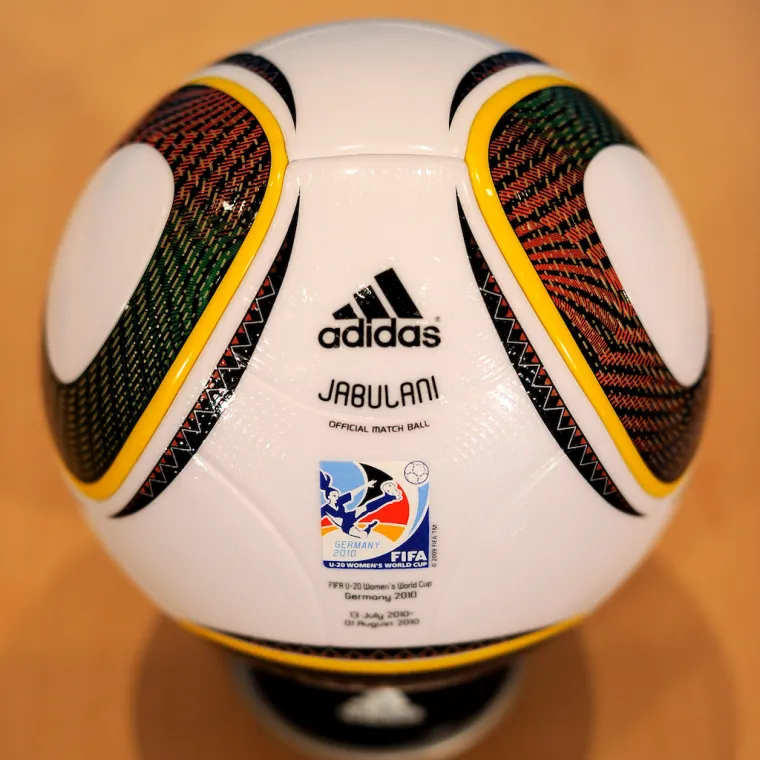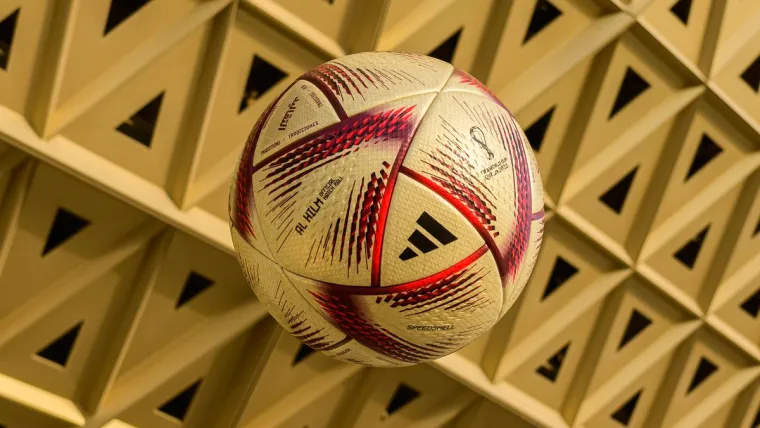The match balls used at the World Cup are the most important in football, which is why Adidas has produced a special edition for the finale.
There are just four matches left at what has been a phenomenal tournament in Qatar, which has provided an unfamiliar setting for a starkly different edition.
One new feature for Qatar 2022 is the footballs, which have been fitted with new technology likely to sweep across the sport after the winner is crowned.
Adidas have been producing World Cup balls since 1970, and their latest offering certainly looks fit for football's grandest occasion.
A golden dream 💛
— Road to 2022 (@roadto2022en) December 11, 2022
Introducing my Al Hilm, the official match ball for the #FIFAWorldCup semi-finals and final #Qatar2022 pic.twitter.com/ljzXvQwau9
MORE: Which teams have qualified for the World Cup semifinals?
World Cup 2022 final and semifinal ball
The likes of Lionel Messi, Luka Modric, Kylian Mbappe and Hakim Ziyech will work their magic with Adidas' brand new "Al Hilm" in the semifinals.
It replaces the "Al Rihla," which was used from Ecuador's opening game victory over Qatar to England's quarterfinal heartbreak against France. Al Rihla translates from Arabic to "the journey."
The Al Hilm – "the dream" – is predominantly gold with maroon detailing, inspired by the deserts surrounding Doha, the World Cup trophy and Qatar's national flag.
⚽️ Llega la pelota Al Hilm, para acompañar el sueño de todo un país... 🇦🇷#TodosJuntos #adidasfootball #WorldCup @adidasAR pic.twitter.com/o40zJXzZDh
— Selección Argentina 🇦🇷 (@Argentina) December 11, 2022
Why is the 2022 World Cup ball special?
The Al Hilm contains all the same revolutionary Adidas gadgets used for the Al Rihla, known as "Connected Ball" technology.
A sensor weighing just 14 grams has been built into the ball and is powered by a small battery – causing a stir on social media when pictures were released showing Al Rihlas being charged like smartphones.
You know the game has moved on when the World Cup balls need charging before a game 😂#Qatar2022 pic.twitter.com/8iGULrrATB
— Football Social Daily (@FSDPod) November 30, 2022
The system has assisted VAR by providing real-time data for decisions, upgrading to a semi-automated offside system – which sparked fury as early as the first goal, when Ecuador captain Enner Valencia's opener was controversially ruled-out for offside by VAR.
The Adidas balls' real-time data has also shown up on TV broadcasts, with statistics such as shot speed, distance, spin and player position all available.
It is the fastest World Cup football of all time, having been tested by footballers in real-world conditions and wind tunnels.
Not everyone in in favour, though, as Uruguay goalkeeper Sergio Rochet pointed out: "Year after year, it gets better for the strikers, and for us goalkeepers it gets very tough ... this is a very fast ball."
MORE: World Cup top goal scorer tracker: Golden Boot rankings
History, and controversy, of World Cup match balls
Controversy over the World Cup match ball has been kept to a minimum in 2022, but 12 years ago there was a lot more drama.
The "Jabulani" was produced by Adidas for the 2010 South Africa tournament. Although it was celebrated for its aesthetics, the players hated it.
The Jabulani's design included internal stitching so that it resembled a perfect sphere. It was literally too perfect, meaning its flight through they air could be unpredictable and cause headaches for goalkeepers.

Siphiwe Tshabalala's iconic thunder-strike in the tournament's opening match was a notable beneficiary of the ball's movement.
One of the game's greatest goalkeepers, Gianluigi Buffon of Italy, said: "The new model is absolutely inadequate and I think it’s shameful letting us play such an important competition, where a lot of champions take part, with a ball like this."
Brazilian Robinho added: "For sure the guy who designed this ball never played football. But there is nothing we can do; we have to play with it."
As they scrambled to make amends for the Jabulani, Adidas claimed the "Brazuca" ball produced the 2014 World Cup was the most intensively tested ball they had ever produced.
List of every World Cup match ball in history
| World Cup | Ball | Manufacturer |
|---|---|---|
| 1930 | Tiento/T-Model | Supplied by teams |
| 1934 | Federale 102 | ECAS, Rome |
| 1938 | Allen | Allen, Paris |
| 1950 | Duplo T | Superball |
| 1954 | Swiss World Champion | Kost Sport, Basel |
| 1958 | Top Star | Remmen |
| 1962 | Crack | Remmen, Chile |
| 1966 | Challenge 4-Star | Slazenger |
| 1970 | Telstar | adidas |
| 1974 | Telstar Durlast | adidas |
| 1978 | Tango | adidas |
| 1982 | Tango Espana | adidas |
| 1986 | Azteca | adidas |
| 1990 | Etrusco Unico | adidas |
| 1994 | Questra | adidas |
| 1998 | Tricolore | adidas |
| 2002 | Fevernova | adidas |
| 2006 | Teamgeist | adidas |
| 2010 | Jabulani | adidas |
| 2014 | Brazuca | adidas |
| 2018 | Telstar 18 | adidas |
| 2022 | Al Rihla | adidas |

